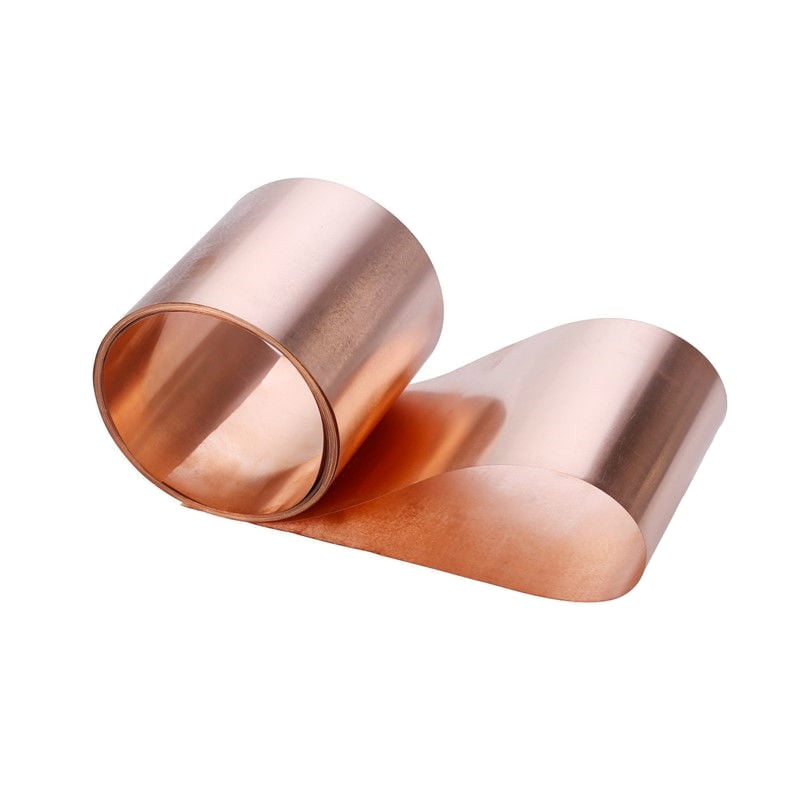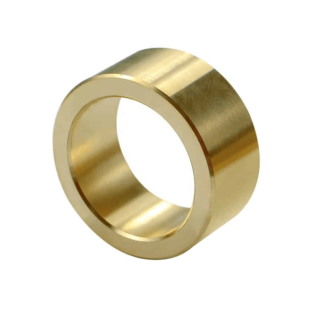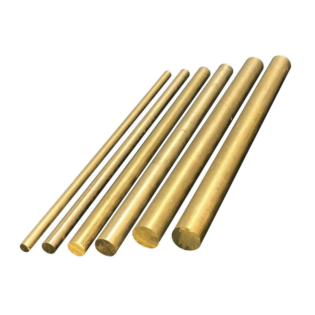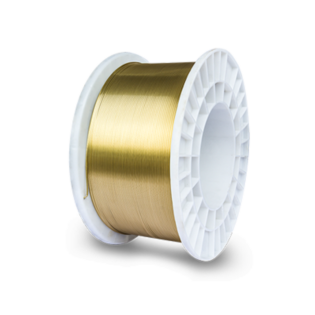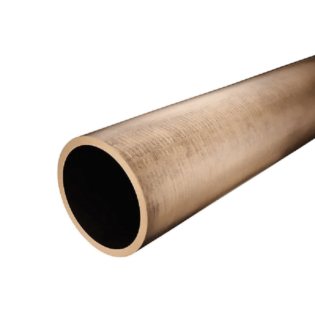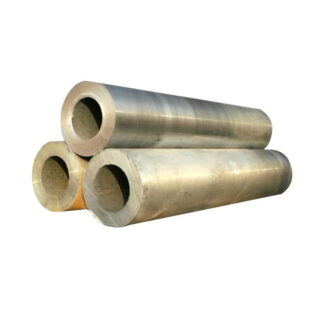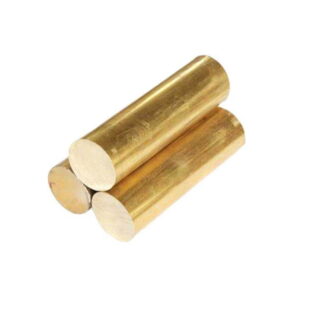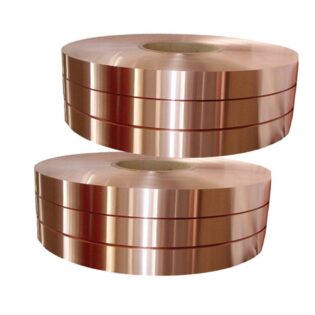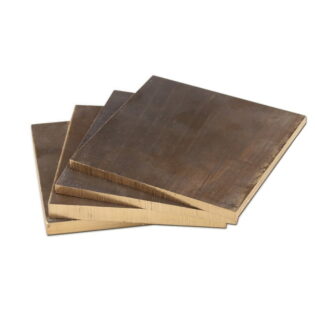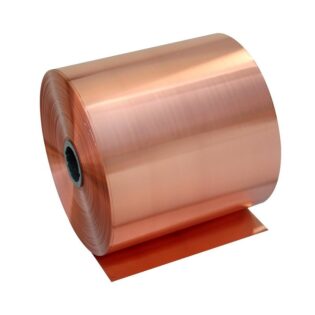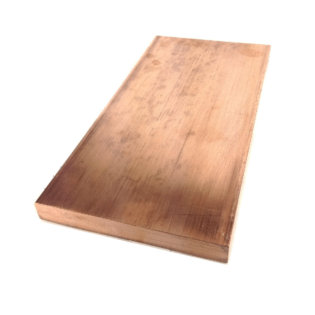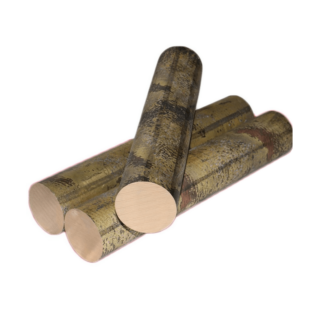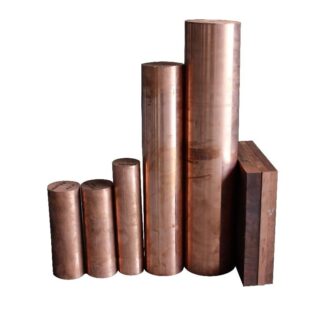Le cuivre AMS 4533, particulièrement connu sous le nom de cuivre au béryllium (C17200), est un alliage de cuivre haute performance largement reconnu pour sa résistance, sa dureté et sa capacité exceptionnelles à conserver ses propriétés mécaniques dans des conditions de température variées. Ce guide fournit des tableaux détaillés sur la composition chimique, les propriétés mécaniques, les performances en température, les applications industrielles, les normes de forme et de taille, les normes mondiales et les qualités correspondantes, les techniques de soudage et de traitement, les détails du traitement à froid et du traitement thermique, les avantages et les inconvénients, ainsi que des comparaisons avec des produits similaires. pour offrir une compréhension complète de l'AMS 4533 Cuivre.
Composition chimique
| Élément | Pourcentage (%) | Rôle |
|---|
| Cuivre | 97,0 – 98,0 | Fournit une excellente conductivité électrique et thermique, matériau de base |
| Béryllium (Be) | 1.8 – 2.0 | Augmente la dureté, la solidité et la résistance à la fatigue |
| Cobalt (Co) | 0.2 | Améliore la résistance et la dureté, aide au durcissement par précipitation |
Propriétés mécaniques
| Propriété | Valeur | Remarques |
|---|
| Résistance à la traction (MPa) | 1 310 (ultime) | Haute résistance à la traction pour les applications exigeantes |
| Limite d'élasticité (MPa) | 1 240 | Limite d'élasticité élevée pour un comportement élastique |
| Allongement (%) | 2-5 | Allongement limité grâce à une dureté élevée |
| Dureté (Rockwell C) | 38-45 | Indique la résistance du matériau à la déformation |
| Module d'élasticité (GPa) | 131 | Haute rigidité et rigidité |
Performances à différentes températures
| Température | Propriété | l'alliage a deux fois sa résistance à la compression | Explication |
|---|
| Basse température | Ductilité | Excellent | Conserve la ductilité à basse température |
| Température ambiante | Résistance, conductivité | Performances optimales | Meilleur équilibre des propriétés |
| Haute température | Rétention de force | Bon jusqu'à 200°C | Maintient la résistance avant un ramollissement significatif |
Applications industrielles
| Industrie | Application | Avantages |
|---|
| Électrique/Électronique | Connecteurs, ressorts, interrupteurs | Conductivité électrique et résistance élevées |
| Aérospatial | Roulements, bagues, engrenages pour avions | Excellente résistance à la fatigue, haute résistance |
| Automobile | Sièges de soupape, composants de transmission | Durabilité, résistance à l'usure |
| Machinerie industrielle | Moules, applications de moulage sous pression | Longue durée de vie, résistance à la déformation |
Normes de forme, de taille et de production
| Paramètre | Possibilités | Remarques |
|---|
| Forme | Tiges, barres, tôles, plaques, tubes | Formes personnalisées disponibles sur demande |
| Taille | Tiges : 0,5 à 8,0 pouces de diamètre
Plaques : jusqu'à 3,0 pouces d'épaisseur | Variété de tailles pour s'adapter aux applications |
| Normes | AMS 4533, ASTM B194, DIN 17666 | Garantit la qualité et la cohérence |
Normes et notes correspondantes
| Pays | Standard | Classe | Remarques |
|---|
| Etats-Unis | ASTM B194 | Alliage 25 | Norme industrielle aux États-Unis |
| Allemagne | DE 17666 | 2.1247 | Spécification équivalente en Allemagne |
| Japon | HE H3250 | C1720 | Spécification standard au Japon |
| Royaume-Uni | BS2874 | CB101 | Norme britannique équivalente |
Soudage, traitement, polissage et traitement thermique
| Traiter | Détails | Remarques |
|---|
| Soudage | Soudage par résistance, Brasage | Attention particulière requise en raison des propriétés du béryllium |
| Traitement | Usinage, Forgeage, Emboutissage, Laminage | Haute usinabilité avec des outils adaptés |
| Polissage | Mécanique, Électropolissage | Fournit une surface lisse et résistante à la corrosion |
| Traitement thermique | Recuit de mise en solution à 780-820°C
Durcissement par précipitation à 315-330°C | Améliore les propriétés mécaniques |
Traitement à froid et traitement thermique
| Traiter | Détails | Remarques |
|---|
| Traitement à froid | Étirage, extrusion, laminage à froid | Maintient la précision dimensionnelle et la finition de surface grâce à moins de contraintes thermiques |
| Traitement thermique | Recuit de mise en solution à 780-820°C
Durcissement par précipitation à 315-330°C | Critique pour obtenir les propriétés mécaniques souhaitées |
Avantages et inconvénients du cuivre AMS 4533
| Avantages | Désavantages |
|---|
| Haute résistance et dureté | Matière première chère |
| Bonne conductivité électrique et thermique | Fragile lorsqu'il n'est pas correctement traité thermiquement |
| Excellente résistance à l'usure et à la corrosion | Problèmes de santé liés à la poussière de béryllium |
| Non magnétique | Disponibilité limitée |
| Durabilité longue durée | Difficile de souder et de braser pour certaines applications |
| Résistant à la fatigue et à la relaxation du stress | Nécessite un traitement thermique précis pour des performances optimales |
Produits similaires et comparaison
| Produit | Comparaison | Remarques |
|---|
| C17500 (béryllium) | Teneur en béryllium inférieure, moins de résistance | Convient aux applications nécessitant moins de résistance |
| C17300 (cuivre au béryllium à usinage libre) | Plomb ajouté pour une meilleure usinabilité et une résistance inférieure | Idéal pour des opérations d’usinage faciles |
| Bronze phosphoreux | Résistance inférieure, propriétés de corrosion différentes | Alternative plus flexible et moins coûteuse |
| Laiton | Résistance inférieure, usinabilité supérieure | Usinabilité supérieure, performances inférieures à des contraintes plus élevées |
Sommaire
Le Cuivre AMS 4533, plus précisément le Cuivre Béryllium (C17200), se distingue par ses propriétés mécaniques exceptionnelles, son excellente conductivité électrique et thermique et sa durabilité supérieure. Il est inestimable dans les applications hautes performances dans divers secteurs, notamment les machines électriques, aérospatiales, automobiles et industrielles. En comprenant sa composition chimique détaillée, ses capacités physiques, ses performances en température et de nombreuses autres facettes, on peut prendre des décisions éclairées concernant son utilisation dans des domaines spécialisés. Malgré son coût plus élevé et ses exigences de traitement difficiles, les avantages de l'AMS 4533 Copper en font un choix privilégié pour les applications d'ingénierie et de fabrication exigeantes.

